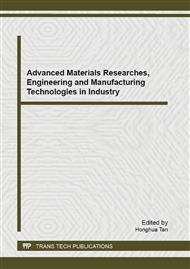p.721
p.726
p.731
p.736
p.745
p.750
p.755
p.759
p.765
Morphology Analysis of Mixed Mode Fatigue Crack Growth in a Low Alloy Steel
Abstract:
In this paper, I+II mixed mode fatigue crack propagation in a low alloy steel 16MnDR was experimentally investigated. Morphologies of crack growth path and fracture surface are analyzed. It is found that upon initiation from the inclined pre-crack, the newly formed crack grows in a direction to be perpendicular to the applied load, making crack mode transformation from I+II mixed mode to mode I. The crack growth is transgranular and no clear branches are presented. Striations and dimples are found on the fatigue fracture surface and the final fracture surface, respectively, showing that the material is ductile in nature.
Info:
Periodical:
Pages:
745-749
Citation:
Online since:
September 2013
Authors:
Price:
Сopyright:
© 2013 Trans Tech Publications Ltd. All Rights Reserved
Share:
Citation:


